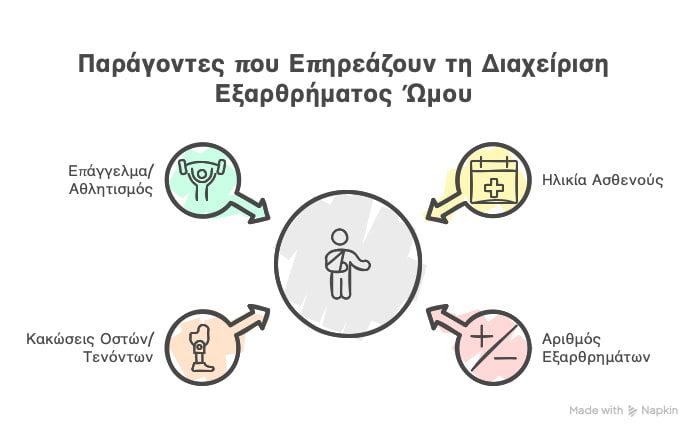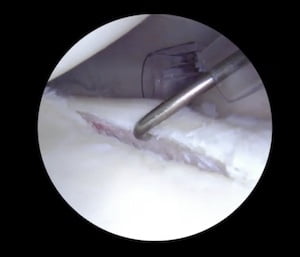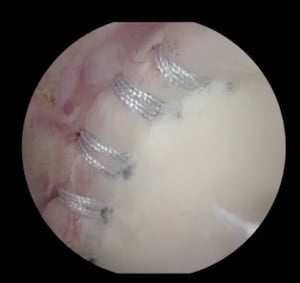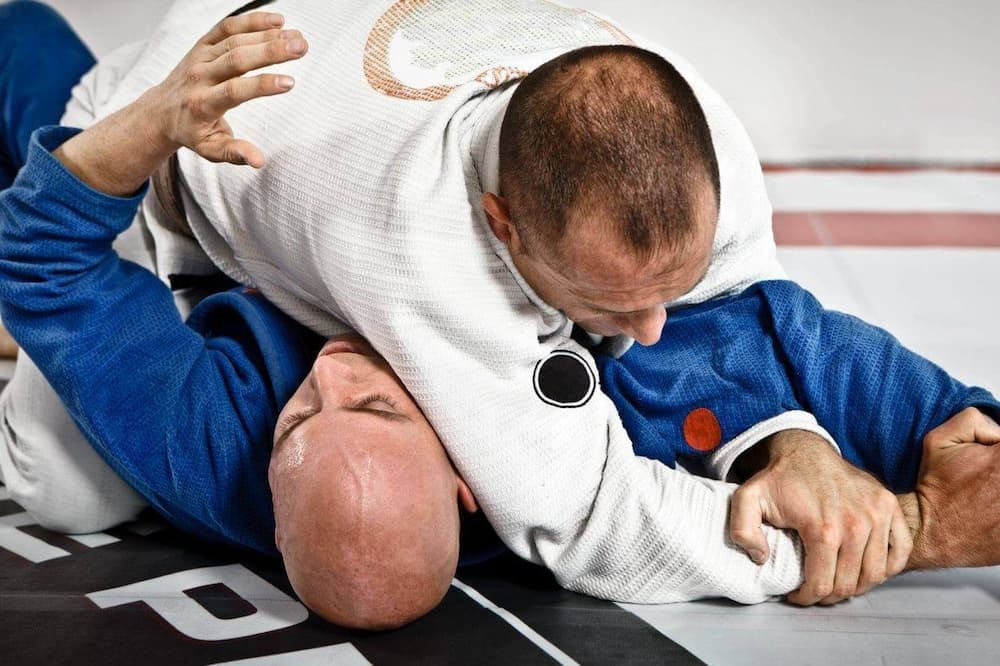Georgios Panagopoulos MD | Orthopaedic Surgeon

A dislocated shoulder is an injury in which your upper arm bone (humeral head) pulls out of the socket of your shoulder blade. Most dislocations are the result of an injury. Acute dislocations need to be reduced urgently under sedation. One shoulder then see a shoulder surgeon to decide further management.
Table of contents
What is a dislocated shoulder?
The shoulder is one of the body’s most mobile joints, which makes it susceptible to dislocation. The shoulder joint comprises the arm bone (humerus) and shoulder blade (scapula). Those two are held together in a ball-and-socket mechanism, in which various muscles, tendons and ligaments also contribute. A dislocated shoulder is an injury in which your upper arm bone (humeral head) pulls out of the socket of your shoulder blade. If this happens or you suspect it has, you should seek prompt medical attention so that a medical professional sets your shoulder back into place. Most people recover within a few weeks. However, once you had a dislocated shoulder, your joint may become unstable, making you prone to further dislocations. This condition is called recurrent shoulder instability.

What causes a shoulder dislocation?
Most dislocations occur through the front of the shoulder (anterior dislocation), but your shoulder may also dislocate to the back (posterior dislocation), or rarely downward (luxatio erecta). A dislocation may also be complete, or be partial (subluxation), which is more subtle.
Once a shoulder has dislocated, it is vulnerable to repeat episodes. When the shoulder is loose and slips out of place repeatedly, you develop a condition called recurrent shoulder instability. This is caused by an injury to a structure called the labrum. The labrum is the cartilage rim of the socket of the shoulder blade (glenoid) and represents the bumper of the socket. During the first dislocation, this bumper gets injured and does not heal properly, it scars down and makes the socket shallower. This makes it easier for the shoulder joint to dislocate the next time an injury occurs, or even with trivial injury. This is typically referred to as the Bankart lesion. Another lesion that occurs with shoulder dislocation is the Hill-Sachs lesion. This is an impaction injury or depression of the humeral head, as it catches in the front of the glenoid. This lesion also has therapeutic implication, as it may engage on socket easily, causing recurrent dislocations. In a minority of patients, the shoulder can become unstable without a history of injury or repetitive strain. In such patients, the shoulder may feel loose or dislocate in multiple directions. This is called multidirectional instability. These patients have naturally loose ligaments throughout the body.

The lesions above predispose to recurrent instability, with patients prone to increasingly easier subluxation or dislocation episodes.
What are the symptoms of a dislocated shoulder?
Symptoms may include:
- Severe pain
- Bruising and swelling
- Obvious deformity and loss of contour of the shoulder (shoulder visibly out of joint)
- Pins & needles, as well as weakness near the shoulder, if your nerves get injured
Diagnosis

The diagnosis of a dislocated shoulder is usually obvious on plain x-rays. In cases of recurrent instability, an MRI scan or MRI arthrogram may be ordered to assess the extent of the soft tissue damage. If there is suspicion of bone loss in the socket, or there are associated fractures in conjunction with the dislocation, a CT scan may be useful as well. In patients over 40-45 years, an ultrasound might be useful, to rule out rotator cuff tears.
What is the acute treatment for a dislocated shoulder?
If you suspect a shoulder dislocation, you shoulder seek immediate medical attention at the closest emergency department. The doctor will examine you, confirm the diagnosis with x-rays, and set your shoulder back into the joint by pulling it with a process called closed reduction. This is usually done under gentle conscious sedation. In some patients, closed reduction under sedation might not work, especially if their muscles go into spasm. In these patients, closed reduction under general anaesthetic may be necessary. Once the shoulder is back in place, any severe pain stops almost immediately. The doctor will order another X-ray to make sure the reduction was successful. Either way, after your shoulder is popped back into the joint, your arm will be placed into a sling for a few weeks. You will then get physical therapy for strengthening. This rehabilitation helps prevent future shoulder dislocations.
How is shoulder instability treated?
Treatment of shoulder dislocation after initial reduction depends on different factors:
- Age at first dislocation
- Total number of dislocations
- Associated lesions (cuff tears, fractures, glenoid or humeral bone loss)
- Profession or sports activities

The way shoulder instability will need to be treated long-term depends on different factors, the most important being age. After the age of 25, a trial of conservative management is reasonable in most patients. This includes typically physical therapy and a home exercise program to strengthen your muscles. Most patients will be fine with this treatment modality and will not dislocate again. Surgery is reserved for those patients who get a further dislocation (recurrent dislocation). Things change for younger patients (<25 years). Studies have shown that the younger the age, the higher is the risk of recurrent dislocation. In those patients, surgery can be offered even after the first dislocation.



Surgery is typically performed with shoulder arthroscopy and is called arthroscopic Bankart repair. This procedure is performed under general anaesthetic +/- regional block. Dr Panagopoulos will insert a camera and tiny instruments through 2 or 3 small 4mm incision around your shoulder and repair the damage (Bankart lesion) with suture-anchors. If an engaging Hill-Sachs lesion is found during the procedure, that would also be amended at the same time with a suture-anchor (remplissage procedure). In the rare cases that bone loss is present in the front of the socket, another procedure, such as an arthroscopic bone block procedure (modified Eden-Hybinette) or an open Latarjet procedure may be necessary. All the above are typically day procedures, and the patients can go home the same day if they wish. Dr Panagopoulos will discuss all therapeutic options with you during your visit in the office.

Recovery
Physiotherapy is crucial for an optimal outcome. Full range of motion is obtained first, followed by strengthening to pre injury levels. Return to sports may vary from 3 to 6 months.
FAQs - Frequently Asked Questions
What is a dislocated shoulder?
A dislocated shoulder is an injury in which your upper arm bone (humeral head) pulls out of the socket of your shoulder blade.
What causes a shoulder dislocation?
In most cases, a shoulder dislocation is causes by a traumatic event -> anterior traumatic shoulder dislocation. Sometimes, a dislocation can occur in individuals with hyper mobility -> multidirectional instability.
What is the immediate treatment?
An acute dislocation is an emergency, that should be treated with urgent closed reduction under sedation.
When do I need shoulder arthroscopy?
– Patients <25 years after the 1st dislocation
– All patients with recurrent instability
– Concomitant rotator cuff tear
When do we try physiotherapy first?
In patients >25 years, a trial of conservative management is usually indicated first, with surgery reserved for those who have a second episode.
When do I need a more complex surgery?
Patients who have had recurrent episodes or have bone loss of the glenoid or humerus, may need a more complex procedure, like a Latarjet.
Find us
Book an appointment with us today
